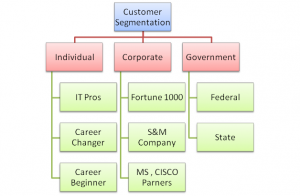Cutting price has long been considered an excellent technique for increasing sales, but in many cases, especially for smaller companies, this is not the best strategy to pursue. This is because larger companies can undercut smaller ones more easily through their strength in size. Cutting price is an approach that you may want to have your staff avoid. Here are the top 7 reason why sales people cut price and how you can prevent them from doing this:
1. Because they can
All too often, companies give their salespeople a free reign with prices. The staff is empowered to discount items without having all of the information that they need to make calculated and prudent pricing decisions. There are commonly two problems with this. One is that the salesperson may lack the knowledge and skills to understand optimum pricing. The second, ironically, is that they may also lack the discipline to do so effectively. Instead of giving sweeping control over prices to untrained staff, companies should provide training and policy guidelines for price cuts.
2. Fear
Fear can be terribly inhibiting. Salespeople may cut prices due to the fear of losing a deal or losing a customer. Fear may also be generated through the sense that the customer is somehow being “gouged.” This fear usually springs from the sense that the value of the product or service is lower than the price charged for it. A lack of understanding of your customer’s business and the full value that your solution adds may also cause this fear. If you believe that your solution is genuinely not worth the money being asked, you can indeed cut price, but you might also tackle the problem by adding value to your offering.
3. Lack of Confidence
A lack of belief in the solution offered is another common cause of price-cutting. The source of this problem usually lies in a limited knowledge of other products or services available on the market. An analysis of the competition including its strengths and flaws can go a long way toward addressing this problem. Salespeople who understand the real benefits and added value of the product they are selling will be more confident and better prepared to close the deal. Salespeople also need to learn how to let go of the potential customers who do not value their solution and focus instead on attracting and selling to those that do.
4. Lack of Skill
Salespeople are not always adept at selling on value rather than price. They need to be furnished with the skills of Value-Added Selling. This strategy focuses not on price, but the key concept of value. Customers perceive a sense of value when they feel as if they are really getting their money’s worth for a solution. Training to provide knowledge and skills on Value-Added Selling is the best way to tackle this common problem.
5. Projection
Salespeople often erroneously project their own sentiments onto the client. In other words, many times salespeople mistakenly assume that everyone thinks the same way they do. For instance, they may think to themselves, “I shop price, doesn’t everyone?” This is assuming that price is the key selling factor for all customers. Since they base their own purchasing decisions on price, they assume that everyone else does too, and this makes it difficult for them to alter their sales methods to accommodate other selling points besides price. Again, training on Value-Added Selling can go a long way to fix this issue as well.
6. Mixed Messages
Sales managers may confuse their staff by giving mixed messages about how to sell. For example, this may happen when managers first begin to support Value-Added Selling, but then get nervous due to lack of sales. Then they decide to move to a volume-sales mentality, focusing on short-term gains and forgetting those principles of Value-Added Sales. Managers who change their minds cause salespeople to become confused. Success here depends on consistency of message.
7. Over identification
Sales staff can sometimes over-identify with clients and become personally attached. This can lead to poor business decisions as personal feelings and relationships are put ahead of sound business judgment. In business, professional distance is necessary at all times to ensure that good, solid decisions can be made regarding customers and sales.
All-in-all, proper training can go a long way to fixing most of the issues related to unnecessary price-cutting in sales. A knowledge-rich, skilled staff is better able to make good decisions, thus allowing your business solutions to be sold effectively and at the price most accurately aligned with their real value.




 Here are different sales channel you can use for your company:
Here are different sales channel you can use for your company:

 “Not every reader is a leader, but every leader must be a reader.” – Harry Truman
“Not every reader is a leader, but every leader must be a reader.” – Harry Truman “I can’t imagine I could become the person I am now without books. Books became synonymous with freedom. They showed that you could open doors and walk through.” – Oprah Winfrey
“I can’t imagine I could become the person I am now without books. Books became synonymous with freedom. They showed that you could open doors and walk through.” – Oprah Winfrey